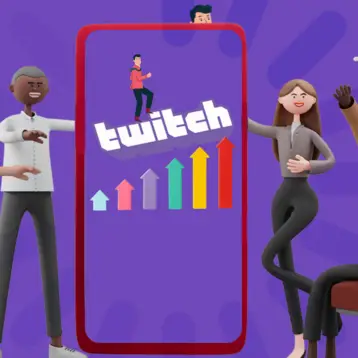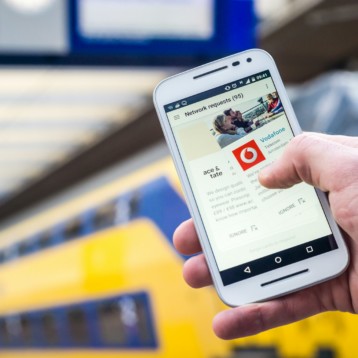Imagine a world where distance vanishes and language barriers fall. Here, cultural diversity sparks innovation, not friction. Teams across continents collaborate effortlessly, tackling global challenges together. This world isn’t a dream. It’s a reality brought close by advanced communication technologies.
Yet, global collaboration still faces significant hurdles. Misunderstandings due to cultural nuances, time zone differences causing fragmented timelines, and inefficient platforms obstructing information flow remain common challenges.
This article delves into the latest communication tools and practices. It shows how they can bridge these gaps. This is about fostering productive and impactful global collaboration.

1. Revolutionizing Platforms
In the realm of global collaboration, communication platforms are undergoing a seismic shift. A notable example is the integration of programmable voice API in various applications. This technology allows for more personalized and efficient voice interactions in a multitude of languages, further enhancing global communication. Gone are the days of lengthy email chains. Today, we see a surge in more dynamic and interactive methods. Real-time virtual workspaces, AI-powered translation software, and cloud-based data hubs are at the forefront of this transformation. These platforms aren’t just changing how people communicate. They’re reshaping the very fabric of global interactions.
Shifting Landscapes
The transition from traditional communication methods to advanced platforms is pivotal. Virtual Reality (VR) collaboration tools, for instance, offer immersive experiences that transcend geographical boundaries. These platforms allow for a level of interaction and engagement once unimaginable. Similarly, AI-powered translation software breaks down language barriers, enabling seamless communication among diverse groups. Cloud-based data hubs provide a centralized, accessible repository for information, ensuring that all team members, regardless of location, have access to the same resources.
Examples
Consider a team of medical researchers spread across different continents. They use VR to collaboratively dissect 3D models of complex biological structures. This approach not only enhances understanding but also accelerates medical advancements. In the business sector, AI-powered language translation plays a crucial role in multinational marketing campaigns. It allows for effective communication and outreach across different language groups, fostering a truly global market presence.
Benefits And Considerations
The advantages of these platforms are manifold. They bring increased efficiency in communication, better decision-making through shared knowledge, and enhanced transparency in collaborative efforts. However, challenges remain. Issues like digital access disparity and cybersecurity concerns are critical. While these platforms offer incredible opportunities for collaboration, they also require careful consideration of their broader implications.
These revolutionary platforms aren’t just tools. They’re gateways to a more connected, collaborative, and innovative global community.
2. Building Cross-Cultural Bridges
In today’s interconnected world, understanding and respecting cultural differences is vital. The ability to navigate diverse perspectives and communication styles isn’t just a skill but a necessity. This section delves into how empathy and cultural intelligence are vital in fostering effective global collaboration.
Empathy And Cultural Intelligence
Developing cultural awareness and empathy is crucial. It’s about recognizing and valuing the diverse ways people communicate and express ideas. Cultural intelligence involves being mindful of cultural nuances and adapting communication styles accordingly. This awareness prevents misunderstandings and enriches collaborations, bringing in a wealth of perspectives and ideas.
Active Listening And Feedback
Active listening and clear communication are the cornerstones of building trust and understanding within multicultural teams. It’s not just about hearing what is said but also about understanding its intent and context. Constructive feedback, delivered with sensitivity to cultural nuances, strengthens team dynamics. It ensures that all voices are heard and valued, which is essential in a diverse team setting.
Training And Resources
Training programs and resources are indispensable to successfully navigate cross-cultural landscapes. They equip individuals and organizations with the necessary skills and knowledge for cross-cultural collaboration. These programs should focus on developing empathy, active listening skills, and understanding various cultural norms and communication styles. By investing in such training, organizations can ensure their teams are well-prepared for the complexities of global collaboration.
Building cross-cultural bridges isn’t just about overcoming language barriers. It’s about fostering an environment of mutual respect and understanding. By developing cultural intelligence, practising active listening, and providing necessary training, we lay the foundation for successful and meaningful global collaborations.
3. The Human Touch In A Digital Age
In a world increasingly driven by technology, it’s crucial to remember the importance of human connection in collaboration. Despite the advancements in communication tools, the essence of successful partnerships lies in interpersonal relationships. Building trust, fostering mutual respect, and maintaining a sense of shared purpose are vital. This section focuses on the human elements complementing technological advancements in global collaboration.
Beyond Technology
While technology is a powerful enabler, it can’t replace the nuances of human interaction. The heart of collaboration is in the connections we build with one another. These connections are based on trust, empathy, and a shared vision. In a digital age, ensuring these human aspects aren’t lost is essential. Technology should serve as a bridge, not a barrier, to human connection.
Emotional Intelligence And Leadership
For leaders, emotional intelligence is critical in guiding diverse teams. It involves understanding and managing one’s own emotions, as well as those of the team. Leaders with high emotional intelligence can navigate through conflicts, motivate their teams, and create a positive, inclusive environment. This skill is especially crucial in a global setting where cultural differences can lead to misunderstandings if not handled sensitively.
Celebrating Diversity
Celebrating cultural differences is vital in global teams. It’s about appreciating the unique perspectives and ideas that each member brings to the table. This diversity fuels creativity and innovation, leading to more robust solutions and outcomes. When teams acknowledge and celebrate their differences, they create a more dynamic and enriching collaborative experience.
While technology is a critical component of global collaboration, the human touch remains irreplaceable. Building strong interpersonal relationships, nurturing emotional intelligence in leadership, and celebrating diversity are crucial. They ensure that collaborations aren’t just efficient but also meaningful and fulfilling.
Conclusion
This article has explored the transformative power of cutting-edge communication and cross-cultural understanding in global collaboration. Revolutionary platforms, cultural bridges, and the human touch in a digital age are reshaping how teams work across borders.
To further enhance global collaboration efforts, fresh approaches are needed. Developing global talent exchange programs can provide valuable exposure to diverse work cultures and practices. Promoting international internships and volunteer opportunities allows individuals to gain firsthand experience in different cultural settings. Supporting open-source initiatives offers a platform for collaborative problem-solving, tapping into a wide array of perspectives and skills.
In sum, embracing these strategies and the insights shared in this article can significantly elevate the quality and effectiveness of global collaboration. The future of work isn’t just about technology but about leveraging human connection and cultural diversity for a more innovative and interconnected world.










